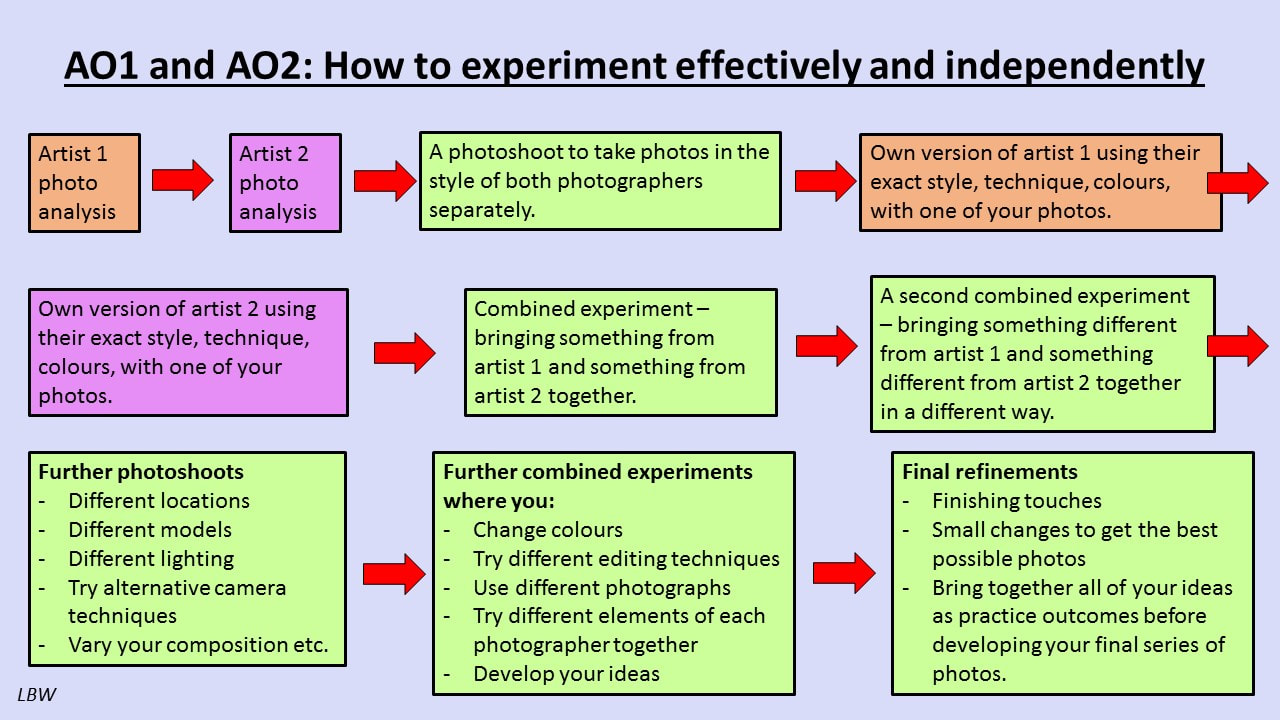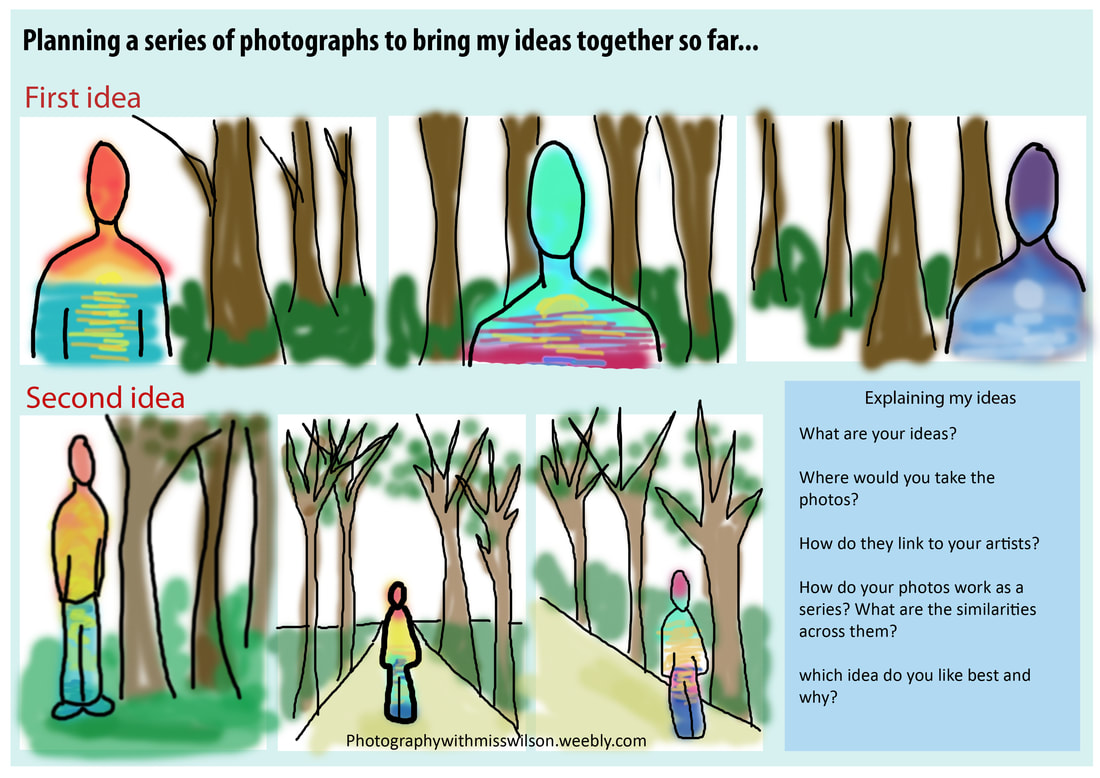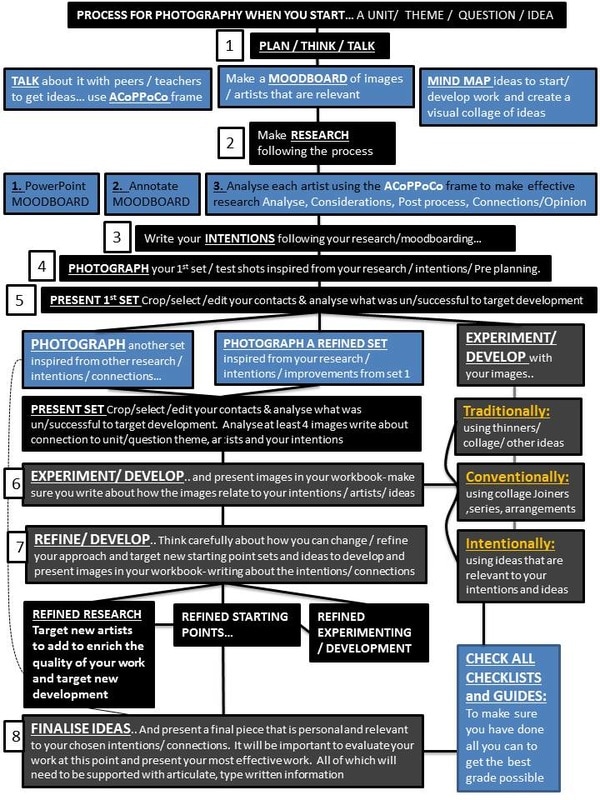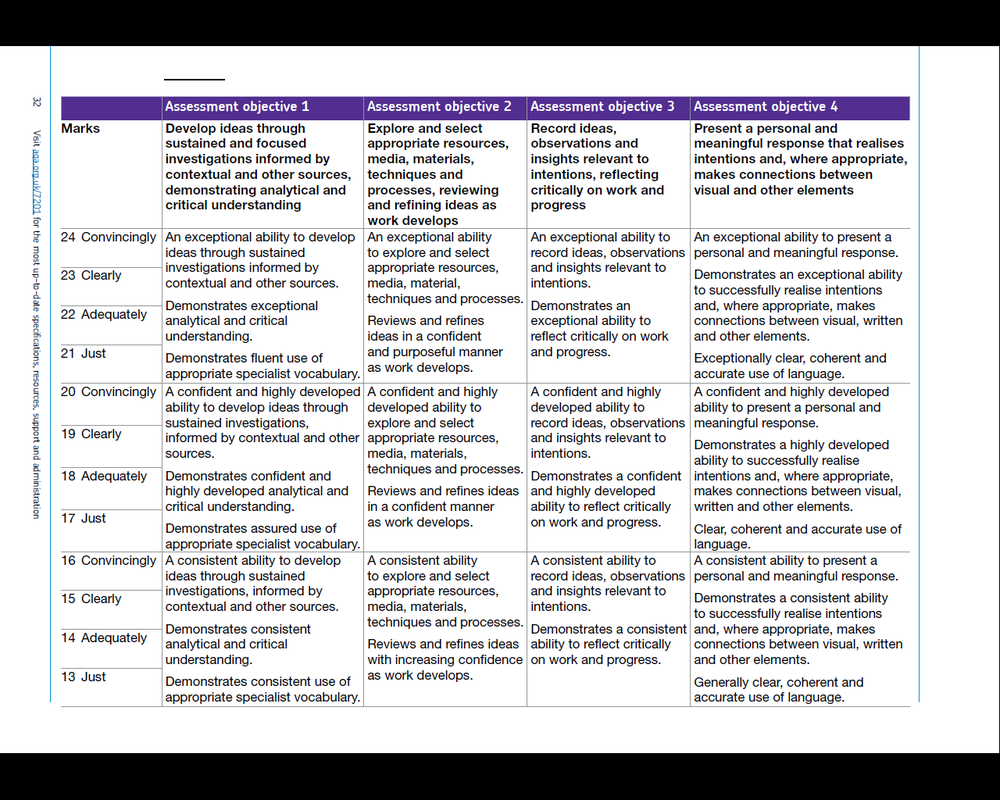Research and experiments
Create your own interpretation of each photographers work. Not a copy - apply their style and techniques to one of your own photographs.
Annotate and analyse both outcomes using technical language and reflecting on what could be developed next.
Combine the two photographers styles in your next experiment. Then annotate again, being reflective and self critical.
Refine your ideas. What is your concept? What do you want your work to be about? What do you want the viewer to think about when they look at it? How are you meeting the exam question? Etc.
Carry out more research at this stage. You might want to produce another collage and/or mind map more specifically linked to your chosen concept, to help document your ideas progressing.
if you have chosen new artists, repeat the process above by creating your own interpretation and anslysing their work, and reflecting on how the artist will inspire you. Produce another experiment that combines this style with previous artist experiments.
Plan and take new photo shoots. Plan using sketches, story boards, notes, mind maps to produce new photographs to work with in the experiments. Make sure you document that you have considered a range of:
- Locations
- Focal points
- Viewpoints and angles
- Camera techniques such as shutter speed, macro etc.
- Formal elements
- Composition
- Lighting
- Photo editing
- Hand manipulation
Annotate your contact sheet and create a wide range of photoshop and/or hand manipulated edits from your photos.
Document your editing as you go along, annotate strengths and weaknesses, and areas for development, with clear links to photographers. Don't leave this until the end - it will help your mark to reflect on this after each experiment as it forces you to think about what you need to improve and how.
Use some screen shots of photo editing on photoshop but don't get carried away with showing every step by step process. You might also want to also use some of the mid way edited experiments as actual experiments!
If you are manipulating by hand, take photographs of what you are doing along the way so that you can document your progress for the examiner.
|
Refining ideas towards your final piece
Regularly reflect on what the strengths and weaknesses of your experiments are.
Are you showing a wide range of skills and producing outcomes of a sophisticated, professional standard? That is what you are aiming for if you want a C or above.
Do your experiments read like a book from left to right, beginning to end? Are your ideas clear? It should be clear to anyone looking at your work how your ideas have developed. How has each experiment led onto the next? How have you reflected on your experiments in order to move forwards and improve? How have your artists and photographers inspired your ideas?
Have you carried out a wide range of photo shoots in different locations and of different things linked to your ideas? Are they inspired by your photographers?
Are your photographs skillfully taken? Do you use the formal elements to help you take effective photographs and talk about them in your annotations?
Have you shown lots of different skills when editing or hand manipulating your photographs? Have you edited purposefully in order to enhance your idea and concept? Have you avoided being repetitive to make sure that your ideas are developing forwards rather than just staying still? Have you taken inspiration from a range of carefully chosen photographers? Can you explain why you chose those photographers fluently using technical language?
Have your ideas developed effectively as a result of different photoshoots and experiments? Have they moved forwards rather than just stuck with the same idea that you had at the start of the project?
Are your final piece ideas exciting? Do they bring together all of your experiments? Is your final piece the best experiment? It should be! Does it showcase the best of your skills?
Have you evaluated your final piece using the writing frame on this website in 'help with writing', making clear reference to artists, explaining your thought process and the journey you went on, and using technical words to evaluate the strengths and areas for development?
The overall process...
How much work should I have?
The examiners are looking for quality rather than quantity, however in order to show effective development and refinement of ideas, you are expected to produce a good amount of work. I would expect at least one full A3 sketchbook (some of the C/B grades that i have seen through the exam board have had 2 or 3!) Roughly this could be:
- 4x artist pages, plus photo shoot and responses to each artist
- multiple combined experiments - combining the techniques of each artist
- 6+ photo shoots - each one different times/locations/models etc. - all annotated and reviewed.
- Rough sketches/drawings and photo shoot plans to accompany each photo shoot
- 4+ experiments for each photo shoot showing different skills and ideas in each
- Planning and mini outcome(s) for the mock exam
- further refinement of ideas through experiments
- Series of final outcomes for the 15 hour exam
- Significant experiments and outcomes presented on boards to make it easy for the examiner to read and award the marks you deserve.
Top grade examples
Other resources
How are you marked?
Coursework is 60% of your grade, the exam is 40%.
For both components, you are marked out of 96. There are 24 marks available for each assessment objective. Most of your marks for AO4 will come from the exam, however you can achieve marks in this band for mini outcomes throughout the project as well.
Because this is a new course, there are no previous exam grade boundaries, so we genuinely don't know how many marks you need to get to achieve each grade.





